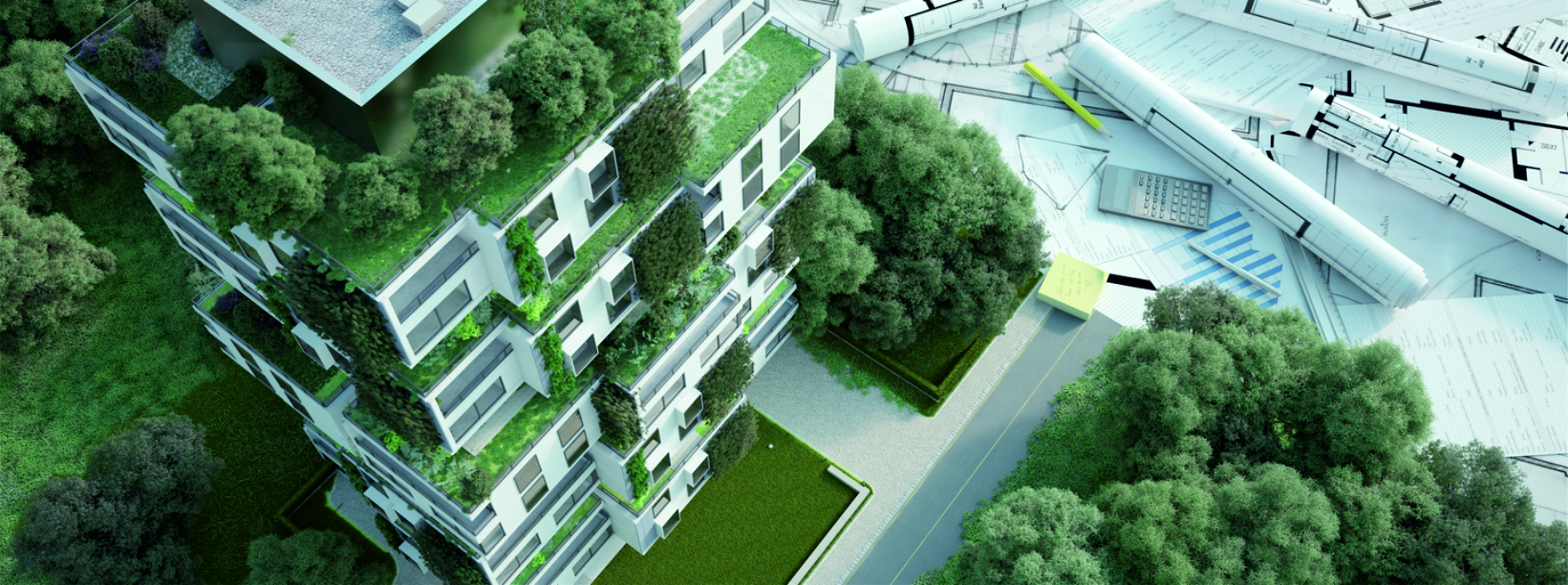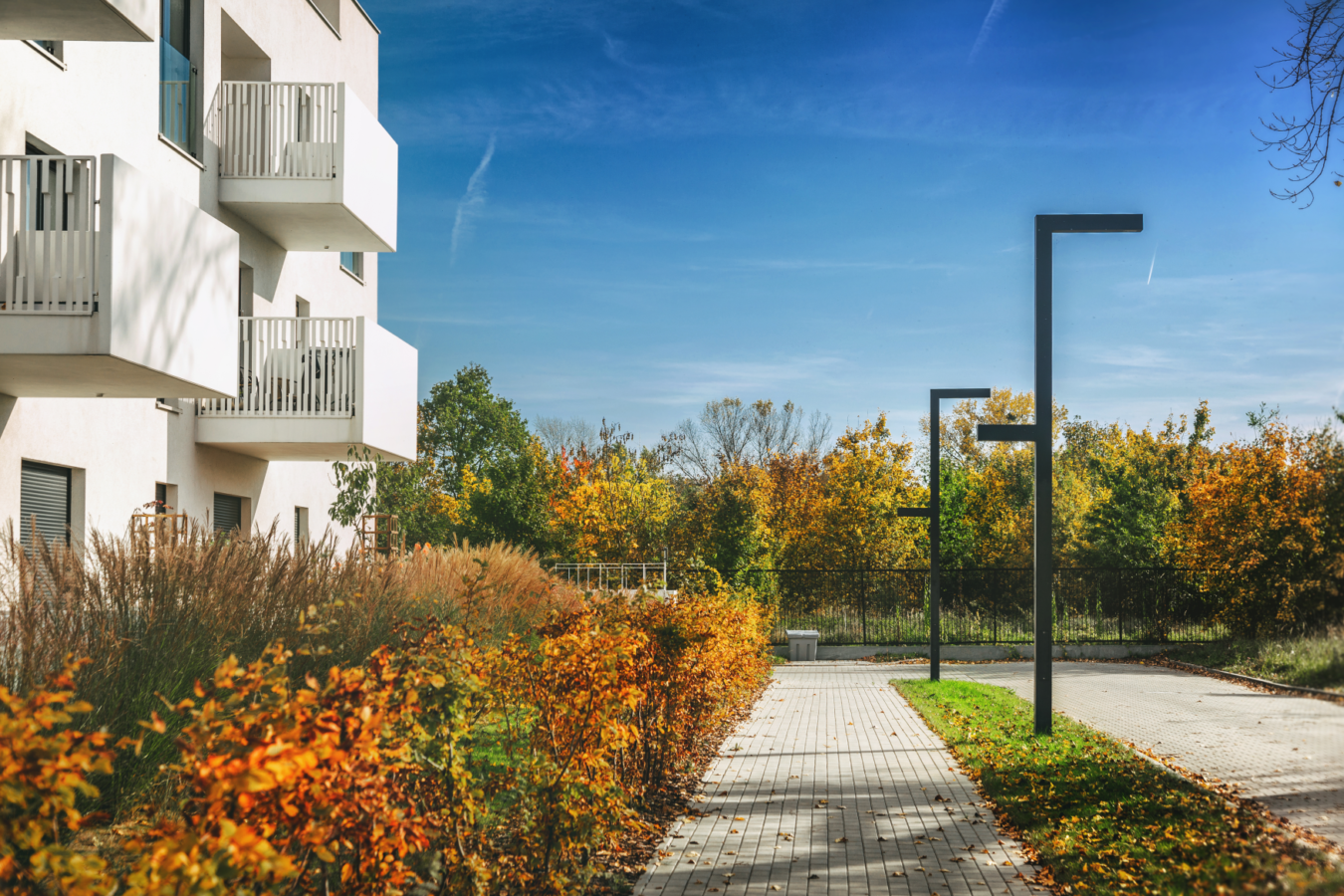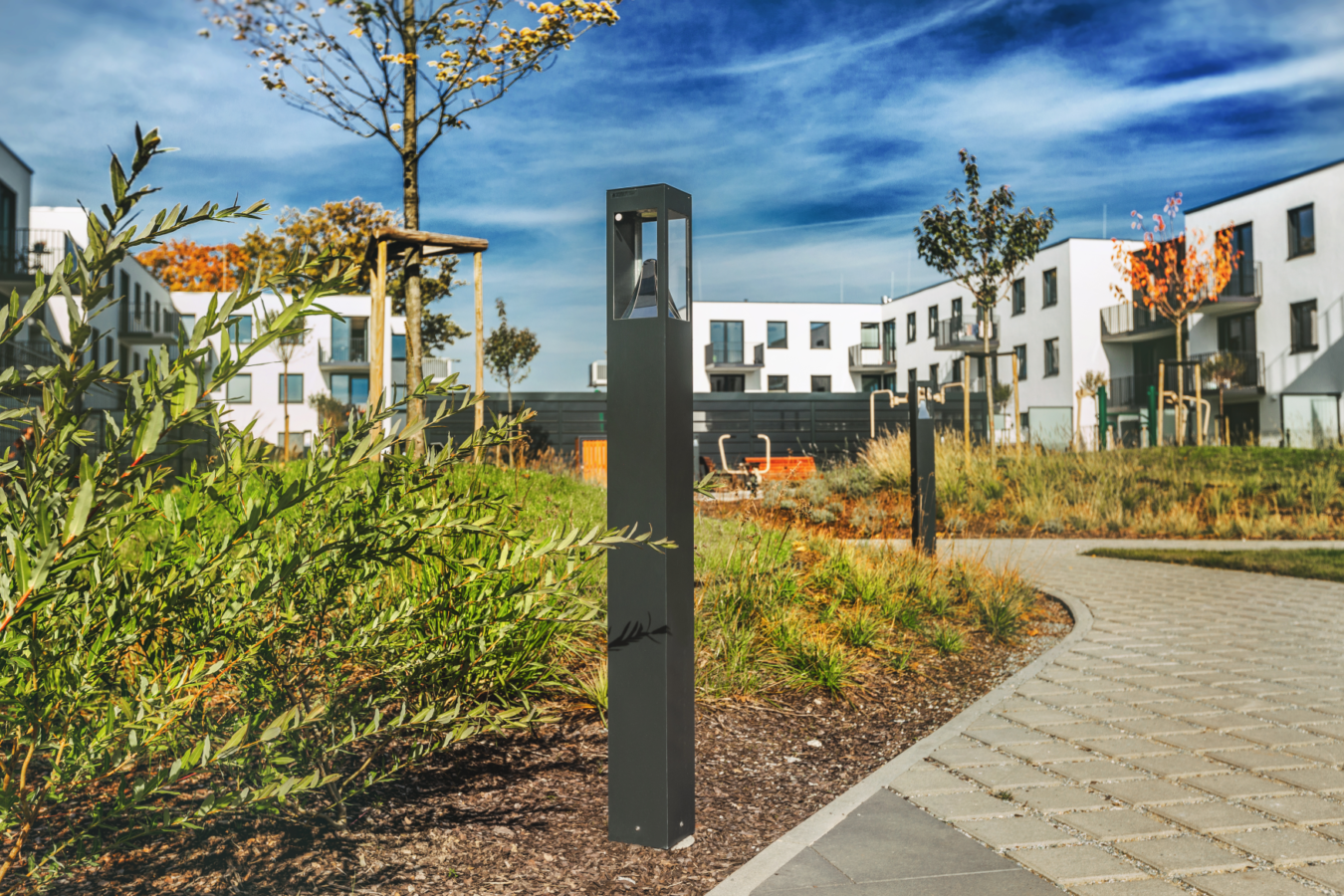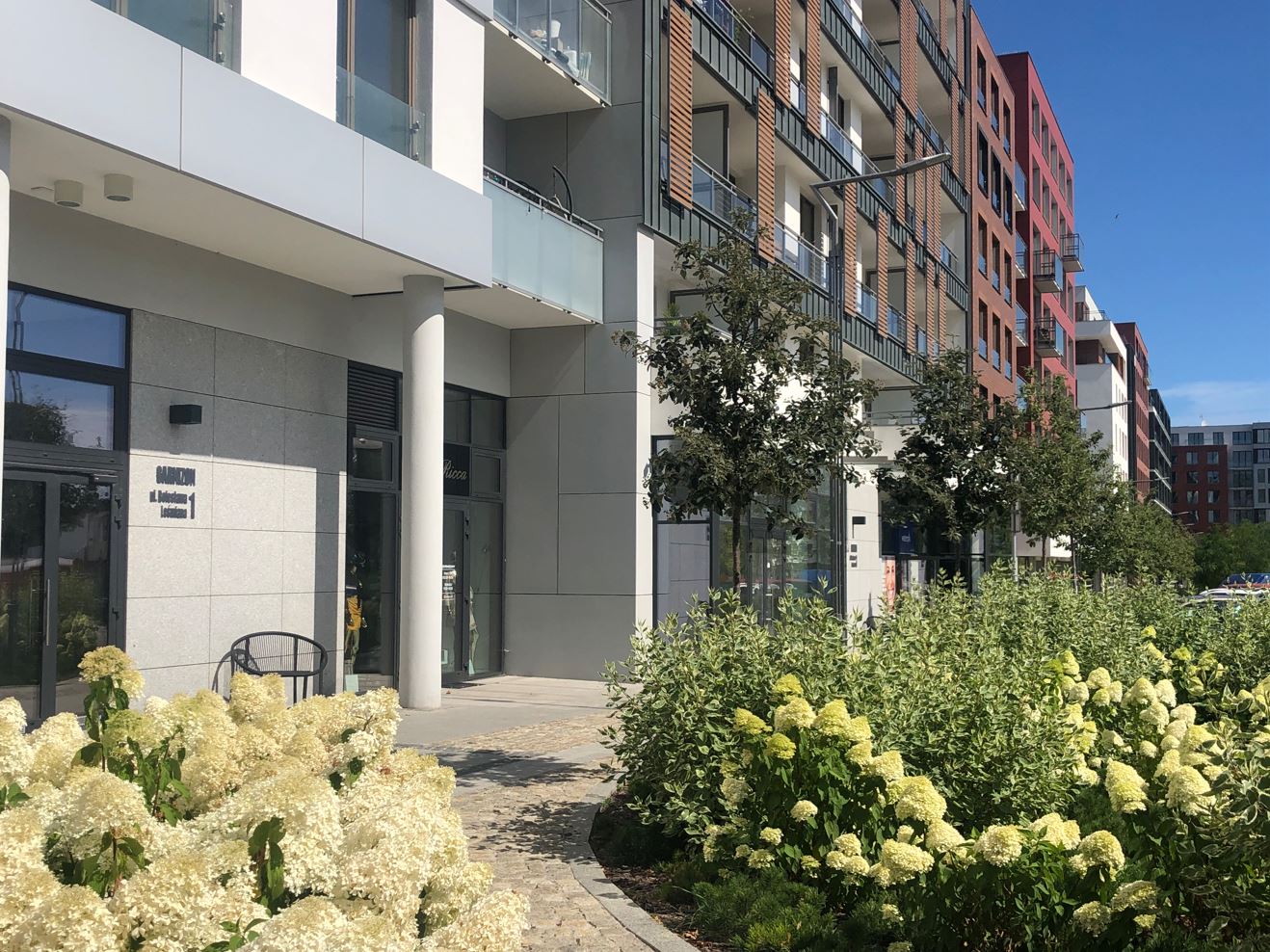Climate change is increasingly forcing a change in approach to infrastructure planning, design and management especially in cities. The aim of green infrastructure is to create smart, efficient and environmentally friendly solutions that also serve to improve the quality of life. Within the elements of a basic green infrastructure system, we can mention parks, green squares, courtyard interiors or green courtyards. The city offers many opportunities to create a green infrastructure system, such as parks, lawns, avenues of trees and flowers in front of buildings or along roads and pavements. It is also possible to use the roofs of buildings to install gardens or orchards, which contributes to water retention, improving the thermal insulation of buildings and increasing biodiversity. The appearance of greenery also influences the visual aspect against the ubiquitous concrete and, above all, reduces the phenomenon of heat islands.
In the context of lighting, green infrastructure, i.e. active natural areas, enables the use of modern lighting technologies to create safe public spaces and aesthetically enrich green spaces. The use of LED light sources, sensor-based lighting control or intelligent networks for management, and the use of solar energy to power, for example, lampposts are just a few examples of such solutions. It is important to design green infrastructure lighting in such a way that, on the one hand, it creates a friendly environment, but also takes into account the impact of lighting on flora and fauna and uses safe solutions. It is then necessary to direct the light distribution appropriately, choose the right colour, but above all use solutions that do not cause light pollution. With good lighting, green infrastructure will fulfil its function of being an actively biological space, but will also enhance urban aesthetics and contribute to air purification and ecosystem maintenance. If these spaces use solutions with increased energy efficiency and aim to reduce energy consumption, greenhouse gas emissions can be reduced and cost savings created, contributing to the creation of more sustainable and environmentally friendly cities.




